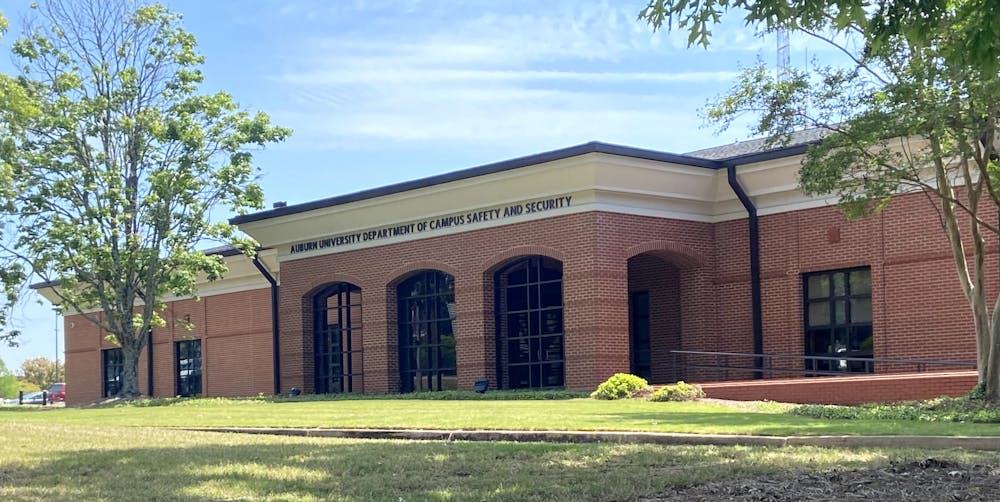Campus Safety and Security
Since 2014, only two arrests have been made in connection with rapes that occurred on Auburn’s campus.
Director of Campus Safety and Compliance Susan McCallister said that not only was there a logical explanation for why this number is low, but that it is on par with most other universities.
“There have been 124 [reported rapes on campus] since 2014, and that’s through 2022,” McCallister said. “We have not confirmed all of 2022’s statistics, so there might be some we find as we go back through. We have a rigorous process with our campus partners to go back and double check that everything was reported to us that other offices received and be sure that we’re counting everything properly.”
Given the number of rapes recorded in the crime logs, the arrest rate would come out at approximately 0.02%. However, McCallister said that of those 124, only 39 were reported to the police. As stated above, this led to two arrests over the last eight years.
“The crime log, we’re required to update that disposition within 60 days of the original entry, so there’s a lot of different factors that go into this,” McCallister said. “When something is reported to us at Campus Safety, we have two business days to get it on the crime log, but it could be something that happened a year or five years ago.”
McCallister said that due to instances like these occurring in the crime log, the chances of an investigation are slim.
She also noted that once a report in the crime log has been in the log for 60 days, they are no longer required to update it, and if an arrest is made after 60 days of the report appearing on the crime log, it will not be shown on the log.
When it comes specifically to sexual assault and rape cases, McCallister acknowledged that survivors of these crimes will often look into other avenues that do not involve a full investigation that could lead to an arrest.
“It is important to remember that with this type of crime that the survivor has rights and options about reporting and which path they want to take,” McCallister said. “Survivors of sexual assault, domestic violence, dating violence, stalking, under federal law are required to be notified of their right to report to the police, to the Title IX office, to both or to neither.”
Campus Safety tries to honor the decision of the survivors and will honor that decision, according to McCallister, unless the alleged perpetrator poses a risk to others. In that case, police will be notified to address an “immediate threat.”
Investigations launched through reports to Campus Safety and Security go to one of two places: Auburn Police Department or Auburn’s Title IX office. APD investigates off-campus reports while the Title IX office fields reports on campus, as well as some off-campus if a student wants to file a report to them.
What is considered on-campus or off-campus is determined by the Clery Act—which requires colleges and universities to have crime reporting systems in place. The Clery Act has geographical boundaries for Campus Safety that determines what is on campus or off campus.
The Clery Act map outlines a perimeter that encapsulates all that is recorded in the crime log. It places boundaries that outline what is owned by Auburn University and what the on-campus police division patrols. The latter often revolves around university property that is further off campus like 160 Ross or 191 College.
The Clery Act ensures that all universities record crime data within the black boundaries of this map.
All crimes reported that occurred within the boundaries of this map appear on the crime log whether those involved are affiliated with the university or not.
The Clery Act also requires that campus security authorities are put in place throughout campus. These authorities are required to report any crimes that are reported to them.
Once a report is fielded from a campus security authority, Campus Safety makes a threat assessment and releases a timely warning. McCallister said that there are over 2,000 campus security authorities on campus who are eligible to report to Campus Safety.
“[Campus security authorities] include all of our athletic coaches and trainers, housing staff, most of the people in Student Affairs, faculty advisors to student organizations, Study Abroad advisors, all of these people that are working with students outside of the classroom are considered campus security authorities under the Clery Act,” McCallister said.
While these campus security authorities are put in place to report crimes they are notified of, McCallister said that cases do not immediately go to the police because the victim of the crime may not want to go forward with a police investigation.
She said that third party reports make up a good portion of crimes in the crime log, but because a third party has reported the incident and not the victim of a crime, they cannot immediately pursue the case through a criminal investigation as the information surrounding the case is often limited and further involvement may not always be desired.
If the survivor of an incident of sexual assault or rape does come forward with no intentions of pursuing an investigation, McCallister said resources and accommodations are provided to help move them forward.
McCallister said that they do encourage survivors of sexual assault or rape to report to the police.
Auburn Police Department and Lee County District Attorney
While McCallister discussed the focus of Campus Safety and Security and how the crime log is composed, Auburn Police Department Assistant Chief of Police Clarence Stewart discussed what happens on APD’s end.
“I think it’s one out of three women and one out of six men will probably have some type of incident that can be regarded as sexual assault,” Stewart said. “Only about a little less than 30% of those incidents are actually reported to police.”
Stewart said that a lot of what is seen on the crime log is not reported to police, specifically sexual assaults.
“It’s not like it is on TV,” Stewart said. “You know, something will happen to someone, and they automatically call the police. It may happen that way, but most of the time it doesn’t. [People usually report] the next day or couple of days or sometimes it’s months when it’s reported to us or any campus official.”
Stewart said that he wanted survivors of sexual assault to report not solely to APD, but to campus officials as well. He felt that simply telling someone and having someone by your side was more important than immediately telling the police, though he did want survivors to report to APD as well.
According to Stewart, APD cannot get involved unless the survivor expresses their desire either to APD or to a support group like Safe Harbor to go forward with an investigation.
“If you don’t want to report to police, please at least report it to someone,” Stewart said regarding the resources and support that Auburn has on campus.
APD officers and investigators have underwent trauma-informed training, according to Stewart. This allows them to have a survivor-centered investigation that does not pursue the facts with no regard for what the survivor is going through.
“It centers the investigation around the survivor and other people involved,” Stewart said. “It’s based on the emotions and stuff they’re going through and being more discrete and taking their time to investigate these things.”
The purpose of trauma-informed training is to help officers and investigators understand what the survivor may be going through and to take that into consideration in their pursuit of the truth.
Stewart said that when it comes to investigating sexual assault reports, it is difficult to standardize the process. Many variables come into play, such as how a report is made — meaning was it from the survivor or a third-party source — or when the report is made.
No matter what, Stewart said that APD collects any evidence available, whether it is through a testimony or physical evidence.
Throughout an investigation, Stewart said they try to protect the rights of both the survivor and the suspect through working discretely and efficiently.
Ultimately, if APD collects enough evidence, the case will go up in front of a grand jury, as all felony cases do.
Once a case reaches the grand jury, Lee County District Attorney Jessica Ventiere said the process is very standard regarding procedure, but, as Stewart noted about each sexual assault case, every case is different.
“By law, grand jury proceedings are closed,” Ventiere said. “The district attorney presents evidence to the grand jury; however, [I] cannot be present during the grand jury’s deliberation.”
Following a grand jury’s deliberation, a decision on whether to indict the suspect or not will arise. According the Ventiere, the defendant will be notified of their indictment, and the remainder of the judicial process will proceed.
After an indictment has been issued, the defendant enters a guilty or not guilty plea. If the former is entered, the defendant will proceed to sentencing, while if they choose the latter, the burden of proof falls on the case’s prosecutor; however, in most cases, indictments are issued if there is probable cause against a defendant.
Do you like this story? The Plainsman doesn't accept money from tuition or student fees, and we don't charge a subscription fee. But you can donate to support The Plainsman.

Tucker Massey, senior in journalism, is the content editor for The Auburn Plainsman.





